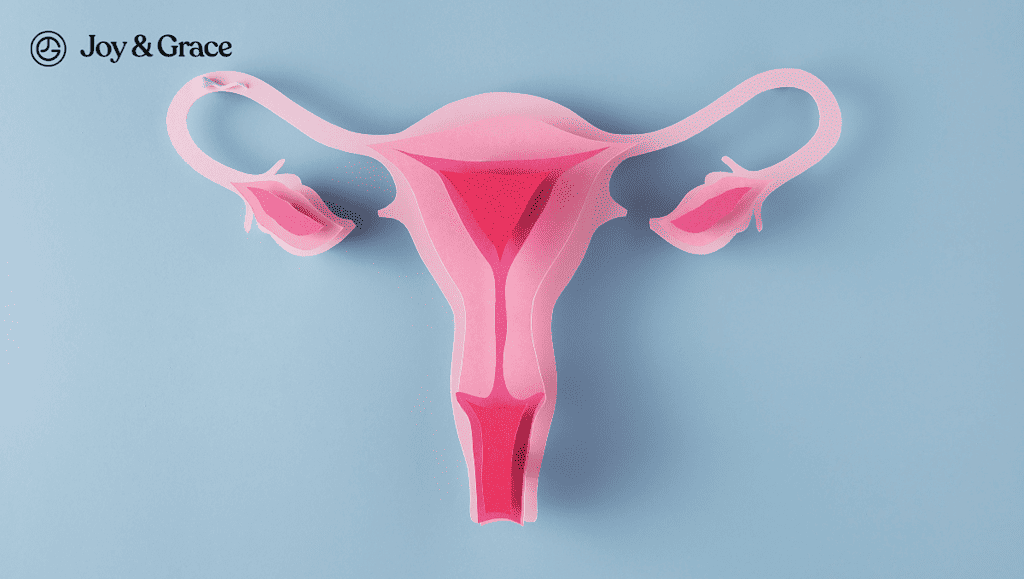Whether reaching for the top shelf, carrying groceries, or sliding into your favorite top, your arms and shoulders are always put to work. But what does it mean when these activities cause pain from the back of your shoulder to your elbow?
Can Shoulder Pain Spread To The Elbow?
Yes, shoulder pain can spread to your elbow. The shoulder and elbow are anatomically connected through the bones and muscles of the upper arm.
Any bone, muscle, or nerve damage can spread the pain from the shoulder down to the elbow. We’ll briefly explain the basics here and then discuss the separate conditions in more detail after this section.
- Damage to the bones
The upper (proximal) end of your upper arm bone (humerus) and your shoulder blade (scapula) come together to form your shoulder, which is a ball-and-socket joint. The humerus extends from the shoulder and connects with the bones of your forearm, forming the elbow joint.
If you hurt the closest part of your humerus, you might feel pain in the back of your shoulder that goes down to your elbow.
- Damage to the muscles and tendons
The muscles of your upper arm also connect the shoulders and elbows together.
The biceps muscle starts from the front of your shoulder blade and inserts into the front of your elbow joint. Meanwhile, your triceps starts from the back of your shoulder blade and inserts into the back of your elbow.
Damage to the tendons, the part of the muscle attached to the bone, of these muscles can result in shoulder pain that may spread to the elbow. For instance, if the biceps tendons are inflamed, you might experience pain at the front of your shoulder that can spread to your elbow.
On the other hand, inflammation or injury to the tendons of your triceps can result in pain at the back of your shoulder that can radiate to your elbow. - Nerve problems
Nerves also play a role in your pain. Nerves from the neck and upper spine travel down to supply the shoulder and elbow regions. When these nerves are inflamed or compressed, pain signals can travel along the nerve pathways, causing discomfort in the shoulder and radiating down to the elbow.
What Causes Shoulder Pain That Radiates Down To Elbow?
Due to the complex relationship between the shoulder and elbow, shoulder pain radiating down to your elbow can be due to a wide array of conditions. Let’s tackle these conditions one by one:
- Overuse
When we repeatedly perform activities involving the shoulder and arm, such as lifting heavy objects, the muscles and tendons can become strained. Overloading your shoulder and elbow joints with weight can also wear them down, resulting in pain.
While the pain from muscle strains is usually localized to the affected muscle and tendon, it’s still possible for the pain to travel to another area.
Furthermore, if left untreated, muscle strains can result in various conditions that can cause radiating pain over time, such as:
- Rotator Cuff Tendinitis
The rotator cuff, a group of muscles in your shoulder, helps stabilize your shoulder joint. Shoulder injuries from accidents or repetitive activities of the arm can lead to rotator cuff tendinitis.
Rotator cuff tendinitis is characterized by sudden pain when moving the shoulder. This pain is especially pronounced during overhead activities. The pain from rotator cuff tendinitis usually stops at or right before the elbow. - Bursitis
Within your shoulder is a fluid-filled sac called the subacromial bursa. This sac acts as a cushion between muscles and bones. When the muscles around it, particularly the rotator cuff muscles, are overused, the bursa can get irritated and inflamed. This results in a condition known as subacromial bursitis.
Like rotator cuff tendinitis, the pain can extend from the shoulder to the elbow and worsen with shoulder movements. - Triceps tendinitis and injury
As mentioned earlier, injury or inflammation to the tendons of your triceps can result in pain at the back of your shoulder, arm, and elbow. The pain is more noticeable during activities that involve extending the arm. - Biceps tendinitis and injury
Similarly, any injury or inflammation in the tendons of your biceps can result in pain in the front and side of your shoulder. The pain can extend down the upper arm to the elbow, particularly when bending the elbow or twisting the forearm.
- Rotator Cuff Tendinitis
- Cervical radiculopathy
Another likely cause is cervical radiculopathy or a “pinched nerve.” Nerves travel from your neck, through the shoulder, down the arm, and into your hand. The roots of these nerves are found in the neck. If they’re compressed, you may feel pain in the neck and shoulders, which may travel down to your elbows and arms.
Unlike the pain from rotator cuff tendinitis and other shoulder problems, pain from a pinched nerve can travel further below the elbow, often reaching your hands and fingers. - Thoracic outlet syndrome (TOS)
TOS happens when blood vessels or nerves in the space between your collarbone and first rib—the thoracic outlet—are compressed. This can cause pain in your shoulders and neck and numbness in your fingers, and the pain can travel down to your elbow. - Arthritis
Inflammation in your shoulder and elbow joints can also be the reason for your pain. While not the same as radiating pain, certain types of arthritis can affect both your elbows and shoulders, resulting in pain in these areas.
It's essential to remember that in addition to pain, these conditions often present with other distinct symptoms that can help in their identification and treatment. Let’s discuss them in more detail.
What Are The Symptoms Associated With Shoulder And Elbow Pain?
The associated symptoms depend on the exact cause.
If rotator cuff tendinitis and bursitis are the culprits, you might experience the following symptoms:
- A severe, aching pain
- A popping or clicking sound when moving your shoulder
- Swelling
- Limited range of motion
- Pain when reaching or raising your arms overhead
For pinched nerves, you might experience:
- Tingling or burning sensations
- Sharp or shooting pain
- Weakness
- Numbness
In thoracic outlet syndrome, both the nerves and blood vessels can be obstructed. When a nerve is affected, the symptoms will be similar to those of a pinched nerve. When a blood vessel is obstructed due to thoracic outlet syndrome, you might also have:
- Edema
- Bluish discoloration of the affected arm
If your pain is from triceps or biceps tendinitis, you might experience:
- Tenderness
- Swelling
- Bruising
- Weakness
Meanwhile, you might experience the following if you have arthritis:
- Sharp, stabbing pain
- Stiffness
- Limited range of motion
- Pain that is worse after resting
Remember that these conditions can manifest differently in each individual. Symptoms may not always be typical. We strongly advise consulting with your healthcare provider for an accurate diagnosis and personalized treatment.
What Does It Mean When My Left Arm Hurts From The Shoulder To The Elbow?
Pain in the left arm, from the shoulder to the elbow, is most likely due to the same reasons we mentioned above. If you’re worried that your symptoms are from a heart condition, then you can breathe a sigh of relief.
It’s rare for heart problems to present with shoulder and arm pain as the only symptom.
Furthermore, pain from a heart problem such as a heart attack has a distinct “crushing” character. Imagine having a small elephant sitting on your chest. It’s totally different from the sharp or aching radiating pain we described above.
Heart problems also tend to come with the following symptoms:
- Shortness of breath
- A rapid or irregular heartbeat
- Fatigue
- Dizziness
- Cold sweats
- Loss of consciousness
Seek medical attention immediately if you experience sudden pain along with any of these symptoms.
How Do I Relieve Shoulder Pain Radiating Down The Elbow?
Relieving pain at the back of your shoulder that spreads down to your elbow usually requires the same solutions you would use to relieve other kinds of shoulder pain. However, it may depend on the exact cause.
With this in mind, let's explore the possible ways you can alleviate shoulder pain running down to your elbow:
- Rest
First off, rest plays a critical role. If your pain is due to an overused or strained muscle, taking a break from the activity causing discomfort can be beneficial. One of the most effective remedies for pain from overuse is simply letting your body rest and giving your body a chance to recover. - Ice and heat therapy
You can also try alternating between hot and cold therapy. Warm packs or heat pads can help promote blood circulation to the injured area and promote healing. Meanwhile, cold or ice packs can help numb the pain and reduce inflammation.
The timing is different for both treatments. Use ice or cold therapy during the acute phase of the injury or within 24-48 hours of the injury. This is to minimize swelling and inflammation.
After the acute phase, you can switch to heat therapy to promote healing of the injury and relaxation of the muscles. - Stretching and gentle exercises
Stretching can also provide a considerable amount of relief. Meanwhile, gentle strengthening exercises can help prevent pain from reoccurring. Emphasis on the "gentle," though. It’s important to start slowly and gently to avoid aggravating the pain.
We recommend consulting with your healthcare provider before starting any exercise regimen. - Over-the-counter Medicines
Non-prescription pain relievers like acetaminophen or ibuprofen may help relieve the pain temporarily. However, it’s essential to use them as directed to avoid potential side effects. - Massage
Gentle massage can help relieve stress on the affected area, releasing tension and promoting healing. However, it’s not recommended for all causes of pain. It’s best to consult with your healthcare provider before getting a massage.
Remember, persistent or severe pain warrants a conversation with a medical professional. They can rule out more serious medical conditions and guide you on the most effective course of treatment. The measures mentioned above are not cure-alls, and some conditions might require more focused treatment.
How Should I Sleep With Shoulder And Elbow Pain?
Getting a good night’s rest can seem impossible if you’re dealing with shoulder and elbow pain. Not only does this combo keep you awake, but your sleeping position might also make the pain worse.
But don't lose hope! Some strategies and positions can help you wake up well-rested and pain-free.
- Avoid the painful side.
This may sound obvious, but first, you need to try avoiding sleeping on the affected side. For instance, if you're dealing with left shoulder and elbow pain, try sleeping on your right side instead. Use a supportive pillow under your neck and a second pillow to hug. This may prevent you from rolling onto the painful side. - Try sleeping on your back.
If the pain affects both shoulders and elbows, sleeping on your back may be your best option. Use a pillow to elevate the affected arm and support the shoulder. This reduces the pressure on your shoulders and elbows and alleviates the pain. This sleeping position is kinder to your neck and back as well. - Try to have a regular sleep routine.
Lastly, try to achieve good-quality sleep as much as possible. Pain management can be much more challenging if you're sleep-deprived. Have a regular sleep routine and limit caffeine and screen time before bed. These can all contribute to better sleep quality and, therefore, better pain management.
What Is The Best Treatment For Shoulder And Elbow Pain?
As mentioned earlier, pain radiating from your shoulder's back to your elbow might require a more focused treatment plan. Depending on the exact cause, your doctor might recommend a combination of the following:
- Physical therapy
Physical therapists can be your best partner in managing shoulder and elbow pain. They can offer targeted exercises to improve mobility, manage pain, and prevent further injury. They can provide routines that work and help guide you through them, avoiding movements that can lead to more stress on your joints. - Medications
- Doctors can also prescribe the same pain medications we mentioned earlier. These include NSAIDs and acetaminophen. These drugs can temporarily decrease pain and inflammation. For more severe pain, your doctor may prescribe stronger pain medications, such as opioids.
These medications should only be used as part of an overall pain management plan, not as a standalone cure. Prolonged use of these drugs can have side effects and does not address the root cause of the pain itself.
- Doctors can also prescribe the same pain medications we mentioned earlier. These include NSAIDs and acetaminophen. These drugs can temporarily decrease pain and inflammation. For more severe pain, your doctor may prescribe stronger pain medications, such as opioids.
- Anticonvulsants
Anticonvulsant medications are often used to treat nerve pain (neuropathic pain). If the pain is related to nerve compression or damage, anticonvulsants may help alleviate the pain by regulating nerve signals. Examples of anticonvulsants include pregabalin and gabapentin. - Antidepressants
Certain antidepressants can be effective in managing chronic pain conditions. This includes nerve-related (neuropathic) pain. These include:- Tricyclic antidepressants (TCAs)
- Serotonin-norepinephrine reuptake inhibitors (SNRIs)
- Steroid Injections
Corticosteroids are potent anti-inflammatory medications. A corticosteroid can temporarily relieve pain by reducing inflammation. This can be especially helpful if the pain is related to conditions like rotator cuff tendinitis or bursitis. - Surgery
Surgery is generally considered when other treatments have failed, and a structural issue is causing the pain. For example, if the pain is due to a herniated disc or nerve compression, surgery may be recommended to relieve pressure on the affected nerves. Surgery may also be done in cases of severe rotator cuff tears.
When Should I See A Doctor For Shoulder And Elbow Pain?
While some pain may result from everyday activities or minor injuries, certain symptoms may indicate a more serious cause. Consulting with a doctor can help identify the cause of your pain and guide appropriate treatment.
Symptoms to watch out for include:
- Prolonged or worsening pain in the shoulder or elbow
- Limited range of motion in the affected joint
- Swelling, redness, or warmth around the joint
- Intense or sharp pain during specific movements
- Difficulty lifting or carrying objects
- Persistent discomfort that interferes with daily and normal activities
- Numbness or tingling sensations in the arm or hand
- Weakness in the affected arm
- Gradual onset of pain without a clear cause or injury
- Pain that persists despite rest and home remedies
You should also seek immediate medical attention if your pain appears right after an accident or trauma.
Takeaway
Pain that travels from the back of your shoulder to your elbow can seem very confusing. It may result from injury or overuse, affecting either side. Repetitive movements can also lead to tendonitis or bursitis. A more serious concern is a rotator cuff tear, common among athletes and heavy lifters.
Nerve problems can also contribute to the pain. But unlike the pain from shoulder problems, the pain from nerve problems often travels further below the elbow to your hands and fingers.
For relief, consider lifestyle adjustments like proper rest and exercise. Temporary solutions include heat and ice packs and over-the-counter pain relievers. A thorough investigation is crucial for proper diagnosis and treatment if pain persists.















